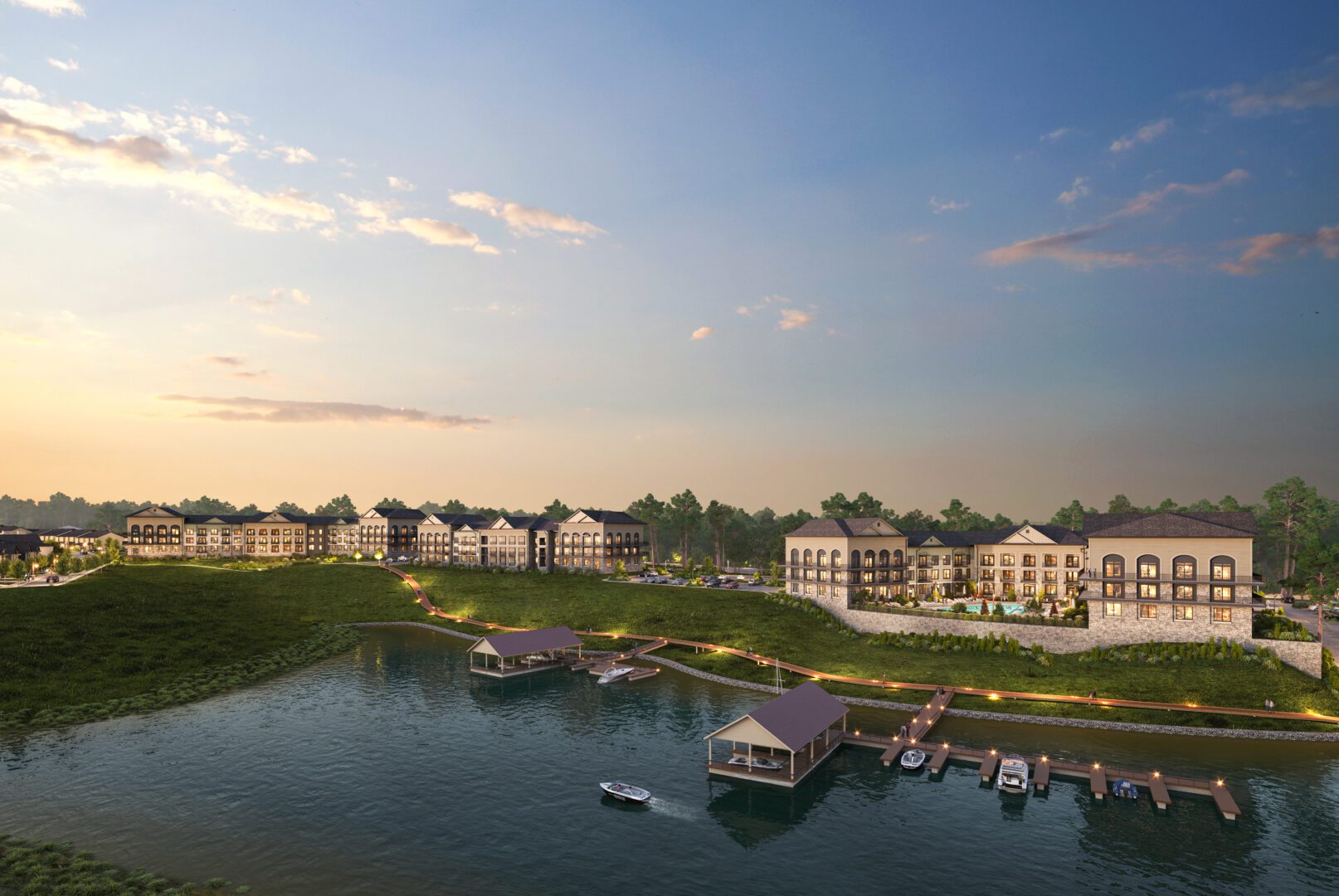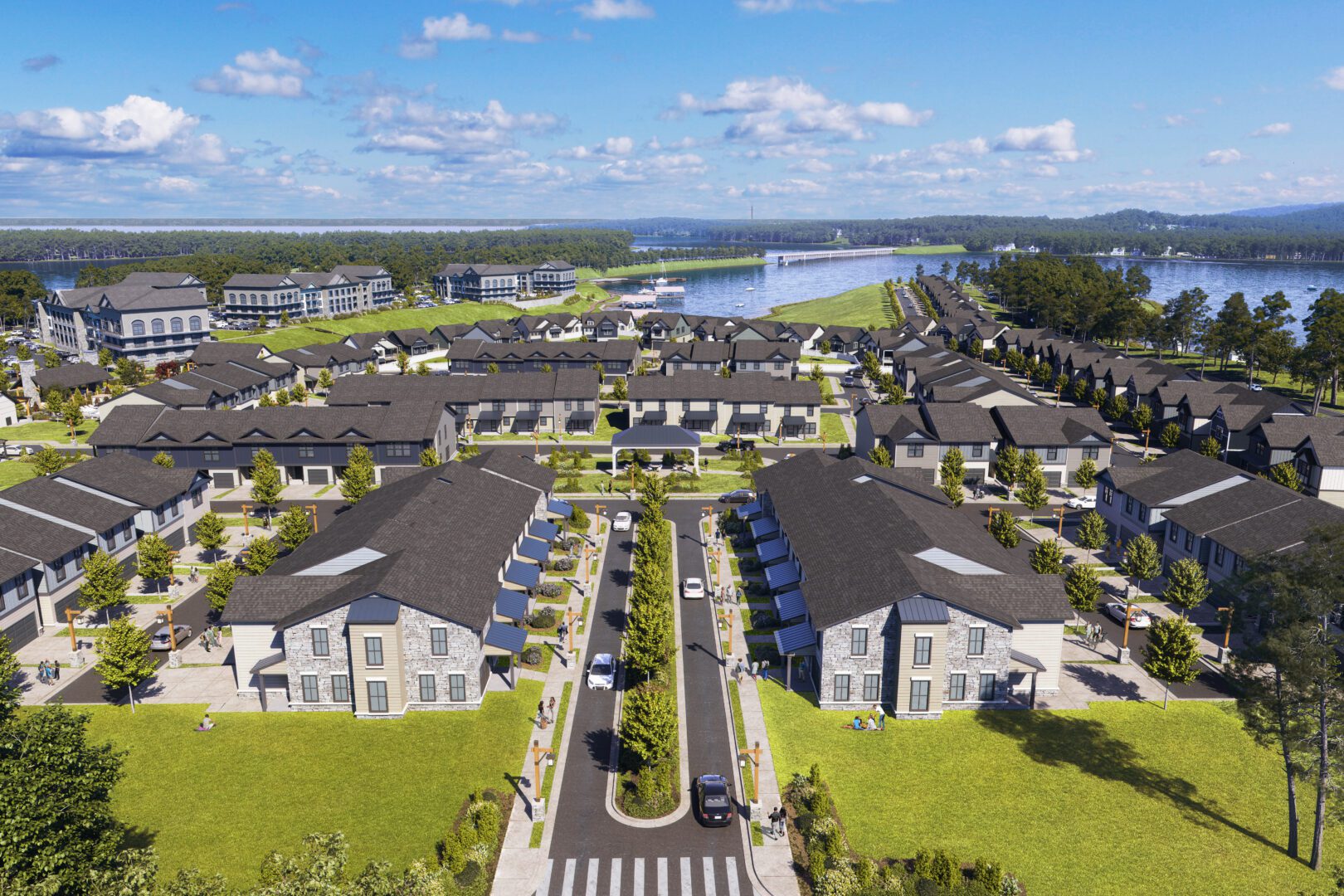Commercial real estate (CRE) is facing new challenges. If you’re a developer or architect, how do you help your project stand out with investors? Visualizations, including 3D exterior renderings, can help. Before we discuss that further, let’s first look at the current state of the market.
Supply and Demand in 2023

In the wake of bank runs in March 2023, commercial real estate (CRE) has suddenly moved to the forefront of financial news within the U.S. The speed and magnitude of the Federal Reserve’s rate hikes took many analysts by surprise, while revealing that the CRE market was particularly vulnerable. Regional banks, which typically invest in CRE, aim for stable cash flows over time when they finance these projects.
But the sudden shock of the regional banking crisis may cause banks to pull back on lending to the CRE market. And because their past lending strategies financed much of the CRE market, a potential financing gap may emerge that will need to be filled.
Taken together, the risk is that commercial real estate values decline due to an imbalance between supply and demand, as well as leading to higher financing costs. What does this mean for investors? Look for the market to force a valuation reset for both owners and lenders. The New York Times reports “more than half of the $2.9 trillion in commercial mortgages will need to be renegotiated by the end of 2025.” This situation will create opportunities for new capital to enter the CRE market on more attractive terms.
Frozen CRE Market
Over the past several quarters, private and public CRE markets have mostly seized up, as buyers and sellers can’t agree on pricing. With bid-ask spreads far apart, few transactions are closing. This produces a cascading effect, making it difficult for lenders and developers to fairly assess the values of existing properties as well as viability of new projects, based on the dearth of recent deals and cap rates.
Given limited valuation data, both developers and lenders are evaluating new projects more cautiously. Theslowdown in CRE investment activity that began in the second half of 2022 continued in the first half of 2023. Financing may be difficult to obtain as the cost of capital increases and lender appetite diminishes amid volatility in financing markets.
Still, capital is always available for the right deals, such as high-quality multifamily, industrial and grocery-anchored retail developments. Lenders will become more active as the macro-economic environment improves and interest rates stabilize.
3D Visuals Are the Secret Weapon

Here at MaxWave3D, we help many of our clients secure financing, gain approval from local planning departments, obtain buy-in from other stakeholders and spur sales before construction has even started. Thanks to our company’s capabilities in 3D renderings, 3D animation and immersive 360 virtual reality, our clients can pitch their projects with confidence. Our clients include real estate developers, property marketers, architects, interior designers, as well as all stakeholders in a commercial or residential development.
In today’s competitive real estate market, capturing the attention of potential investors is crucial. While traditional exterior renderings have been a staple in real estate marketing, the use of 3D visuals takes the presentation to a whole new level. 3D visuals have the power to immerse investors in a lifelike experience, providing them with a deeper understanding and appreciation of a property’s potential.
Telling Your Story
Here are some ways in which 3D visuals go beyond traditional exterior renderings and capture investors’ attention:
- Realistic representation: 3D visuals offer a highly realistic representation of a property, allowing investors to visualize the project as if it were already built. This level of detail goes beyond what traditional renderings can provide, giving investors a clear sense of the project’s aesthetics, scale and ambiance. The immersive experience created by 3D visuals helps investors connect with the property on a more personal and emotional level.
- Contextual integration: 3D visuals can be seamlessly integrated into real-life environments, providing investors with a better understanding of how the property fits within its surroundings. By incorporating actual geographic data and context, such as neighboring buildings, landscapes and infrastructure, 3D visuals enable investors to evaluate the property’s location and its potential impact on its value.
- Interior walkthroughs: While exterior renderings primarily focus on the building’s facade, 3D visuals can also showcase the property’s interior spaces. Investors can take virtual tours through the property, exploring each room, examining finishes and experiencing the flow and functionality of the space. This level of interior detail allows investors to assess the property’s potential for different purposes, such as commercial or residential use.
- Day-to-night transitions: 3D visuals can illustrate the property’s appearance throughout different times of the day, from morning to evening. This dynamic feature showcases how lighting conditions affect the property’s aesthetics and can highlight unique design elements. Investors can visualize how the property adapts to changing daylight and nighttime scenarios, enabling them to evaluate its overall appeal and desirability.
- Seasonal changes: Weather and climate can also be conveyed through 3D visuals. Investors and customers can get a glimpse at what the property will look and feel like during each season. Stakeholders can see what it would look like decorated during the holidays or during spring flower blooms.
- Enhanced communication: In addition to creating images, 3D renderings can provide a common language between developers, architects and investors. With a shared visual representation, all parties involved can effectively communicate ideas and concepts. Investors can provide feedback and make informed decisions based on a comprehensive understanding of the project, minimizing the risk of misinterpretations or misunderstandings.
- Differentiation and marketability: In a crowded real estate market, the use of richly detailed, true-to-life visuals sets a property apart from competitors. It demonstrates a commitment to innovation, attention to detail and a desire to provide investors with an exceptional experience. The use of cutting-edge technology can enhance a property’s marketability and increase its perceived value, attracting a broader range of potential investors.
- Remote accessibility: With 3D exterior renderings, investors can explore a property from anywhere in the world. This feature is particularly valuable in global markets where investors may not have the opportunity to visit the site in person. By providing a realistic and immersive experience, 3D visuals enable investors to make confident decisions without the need for physical presence.
Go Beyond Exterior Renderings
MaxWave3D is transforming the way our clients propose, finance and market their developments with stunning 3D renderings, animated videos and virtual reality tours. Our experienced and responsive team makes producing 3D animated tours easy. We have:
- 20 years of experience.
- 300x proven ROI on average with photorealistic assets.
- A deep portfolio of work with proven design pros.
- A seamless collaboration process.
Contact us to pitch your projects with confidence.
